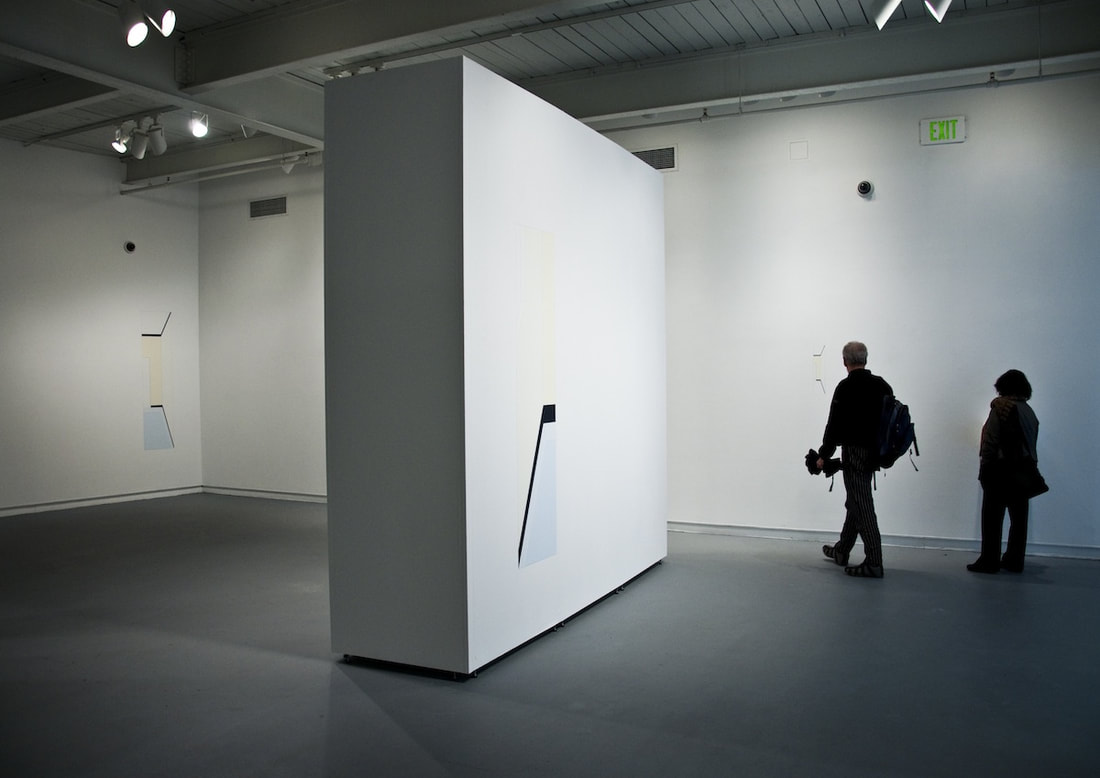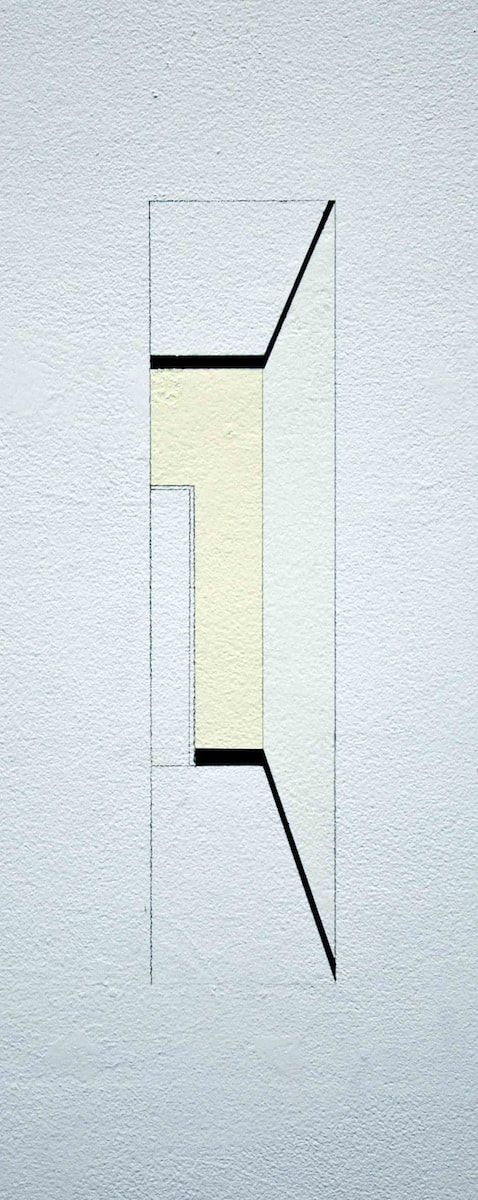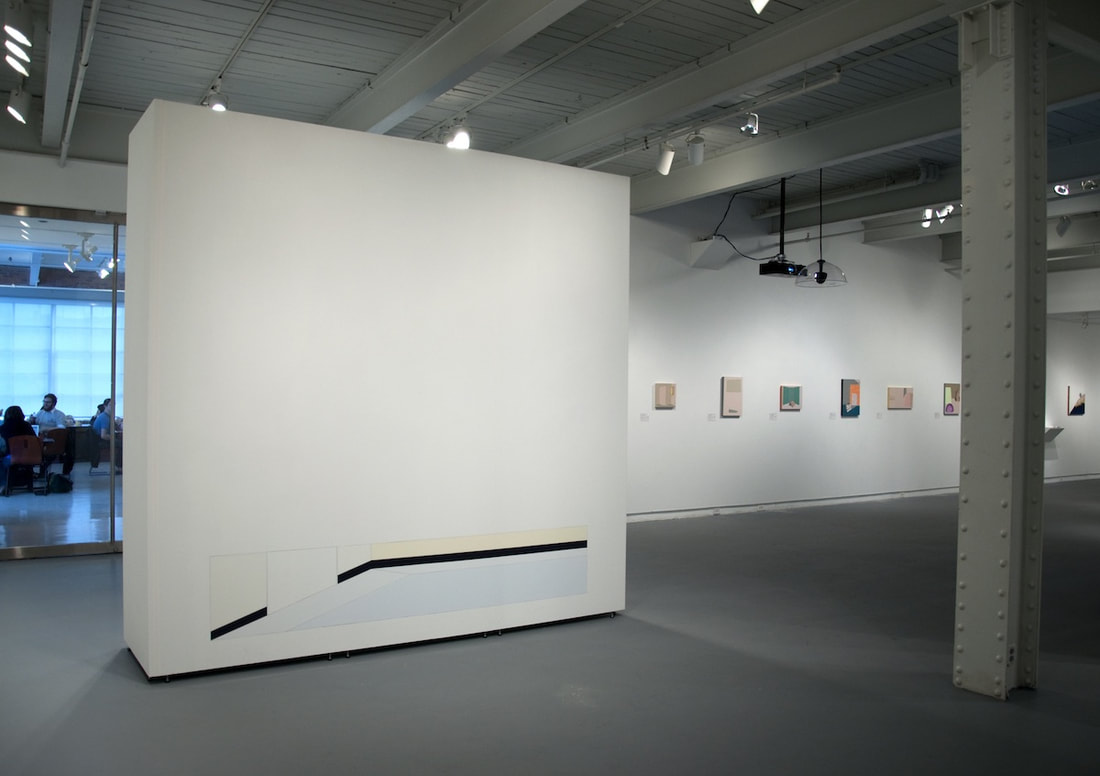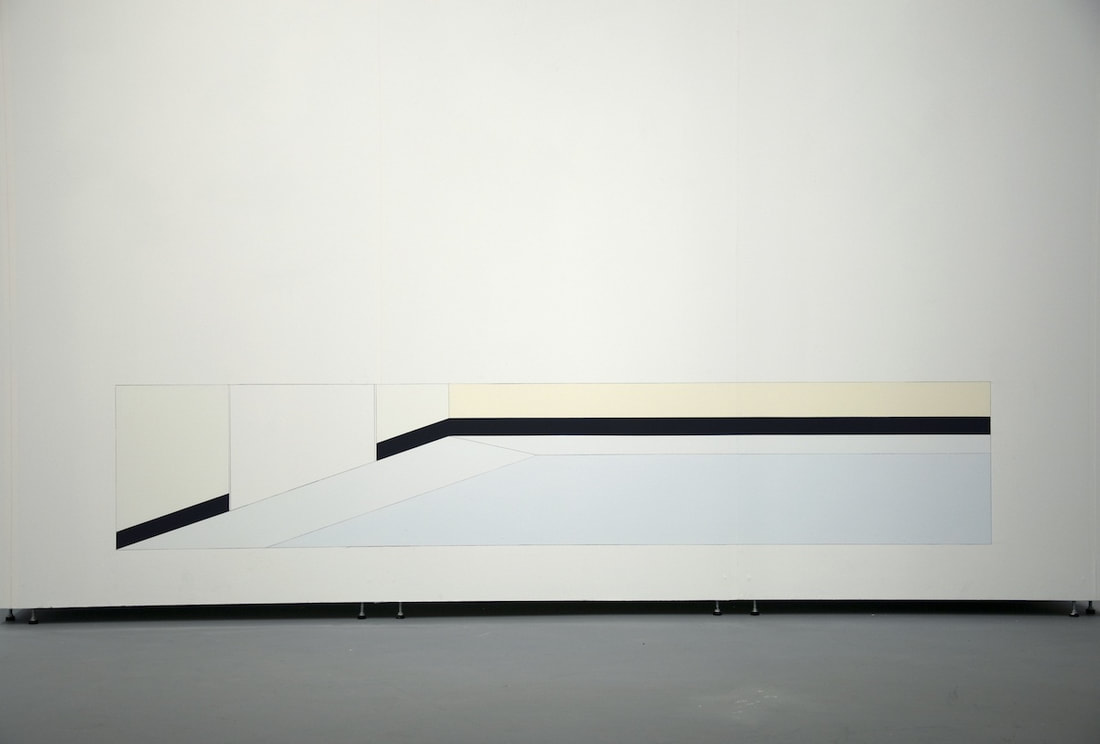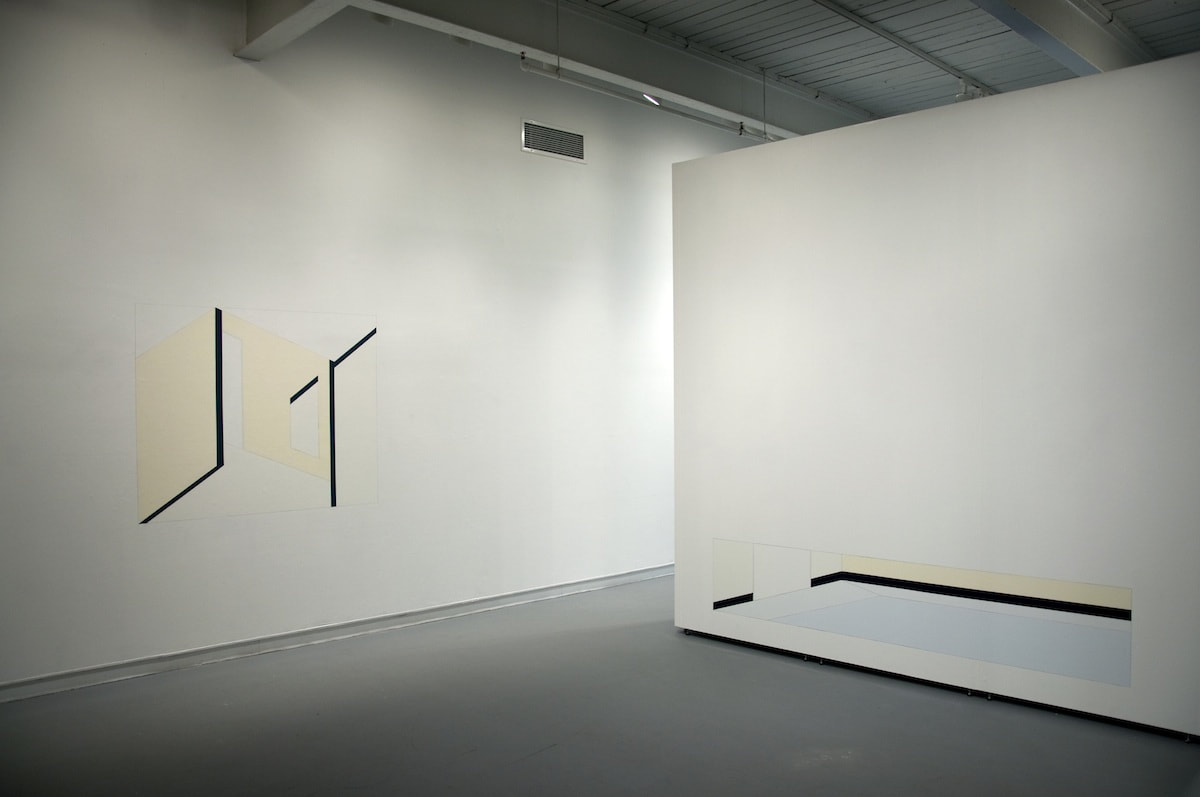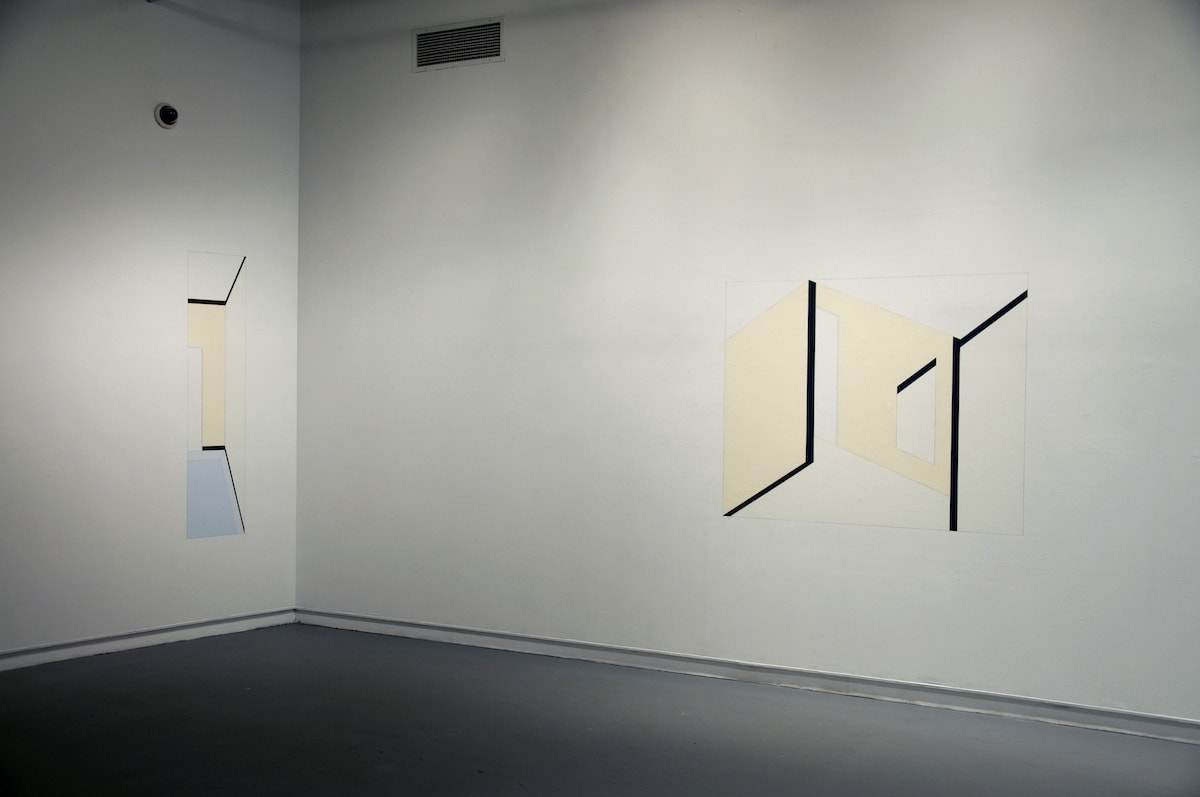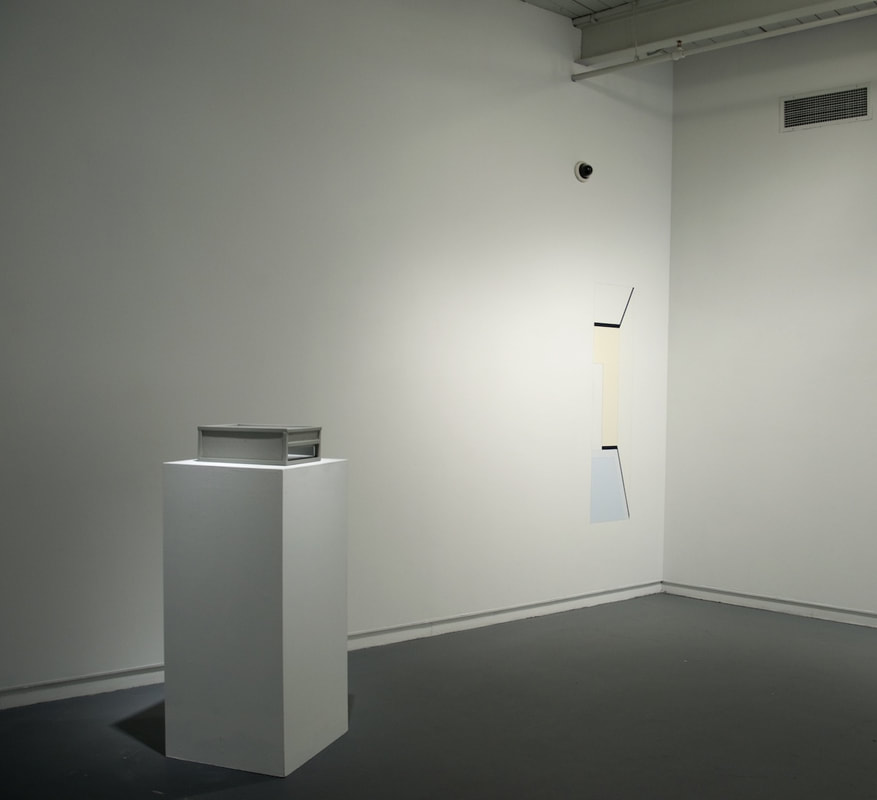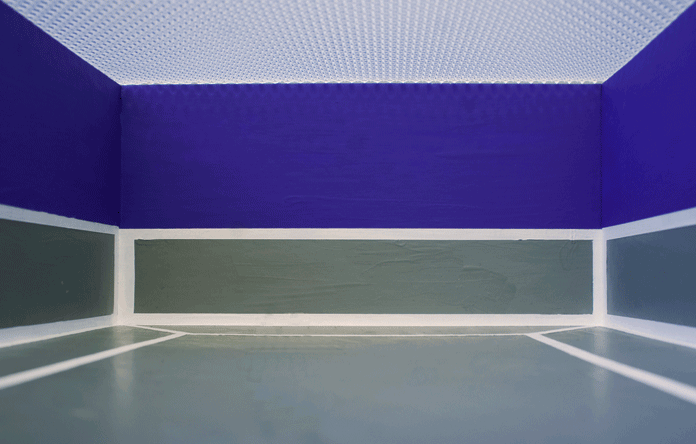Permission Need Not Be Granted For A Space With No Volume
MFA Exhibition - MICA Decker Gallery, house paint on drywall (2010)
Permission Need Not Be Granted For A Space With No Volume is a collection of installations that were mounted in culmination of my MFA work at MICA in 2010. Each piece suggests a space within, behind, or beyond the surface of the wall. Each is a window into an imagined space and offers an incomplete, voyeuristic peek into extended architecture of ambiguous dimensions and spatial possibilities. The frames of the installations crop the imagined architecture in ways that suggest that the spaces within them could continue on forever. The color combinations in the work were designed to be basic references to light, sterile, institutional pastel colors. Geometry is less precise in this body work than later works, and their rectangular frames keep these works more directly related to traditional painting.
The temporary and subsequent emotive qualities of my painted installations relate very much to a line in poet Mark Doty's memoir, Heaven's Coast, about his partner's death of AIDS: "All my life I've lived with a future which constantly diminishes but never vanishes." These spaces in my installations are always offering a present experience of impossible future spaces that, because of the impossibility and temporality of their design, will never emerge from fleeting, abstract proposals of potential space. Doty was writing about the threat of death that persistently loomed over the gay population with the onset of AIDS in 1980s, and out of equal personal interest and homage to my queer ancestry, I have taken his expressed uncertainty and turned it into temporary, voyeuristic glimpses of impossible spaces.
As a transgender person, I have had an uncommon experience of seeing my access to spaces change in tandem with my gender presentation. I title this body of work Permission Need Not Be Granted For A Space With No Volume as a continuation of my thinking about limited access to spaces based on implied and enforced social regulations. How can a space drawn of impossible geometry, and subsequently without volume, exist to be owned or regulated? How can anyone tell me I don't belong in a space with unknown qualities and an unknown purpose?
The temporary and subsequent emotive qualities of my painted installations relate very much to a line in poet Mark Doty's memoir, Heaven's Coast, about his partner's death of AIDS: "All my life I've lived with a future which constantly diminishes but never vanishes." These spaces in my installations are always offering a present experience of impossible future spaces that, because of the impossibility and temporality of their design, will never emerge from fleeting, abstract proposals of potential space. Doty was writing about the threat of death that persistently loomed over the gay population with the onset of AIDS in 1980s, and out of equal personal interest and homage to my queer ancestry, I have taken his expressed uncertainty and turned it into temporary, voyeuristic glimpses of impossible spaces.
As a transgender person, I have had an uncommon experience of seeing my access to spaces change in tandem with my gender presentation. I title this body of work Permission Need Not Be Granted For A Space With No Volume as a continuation of my thinking about limited access to spaces based on implied and enforced social regulations. How can a space drawn of impossible geometry, and subsequently without volume, exist to be owned or regulated? How can anyone tell me I don't belong in a space with unknown qualities and an unknown purpose?
